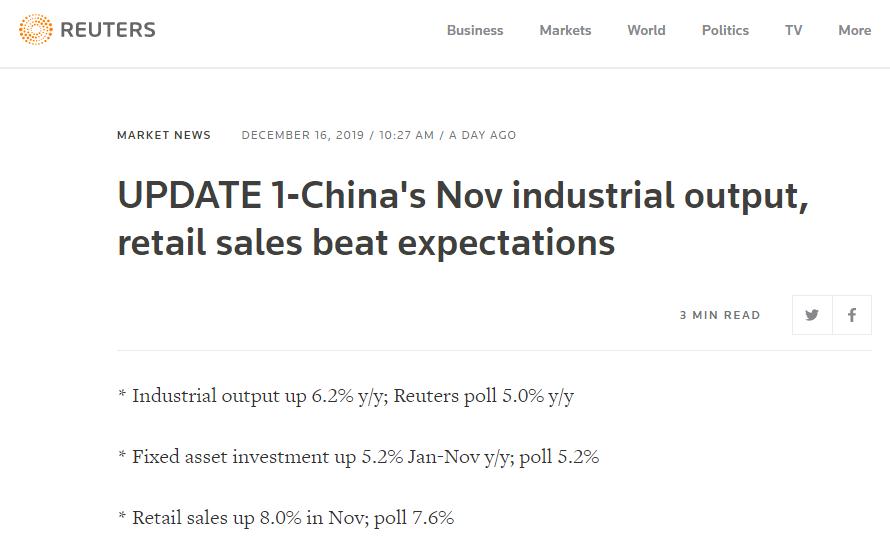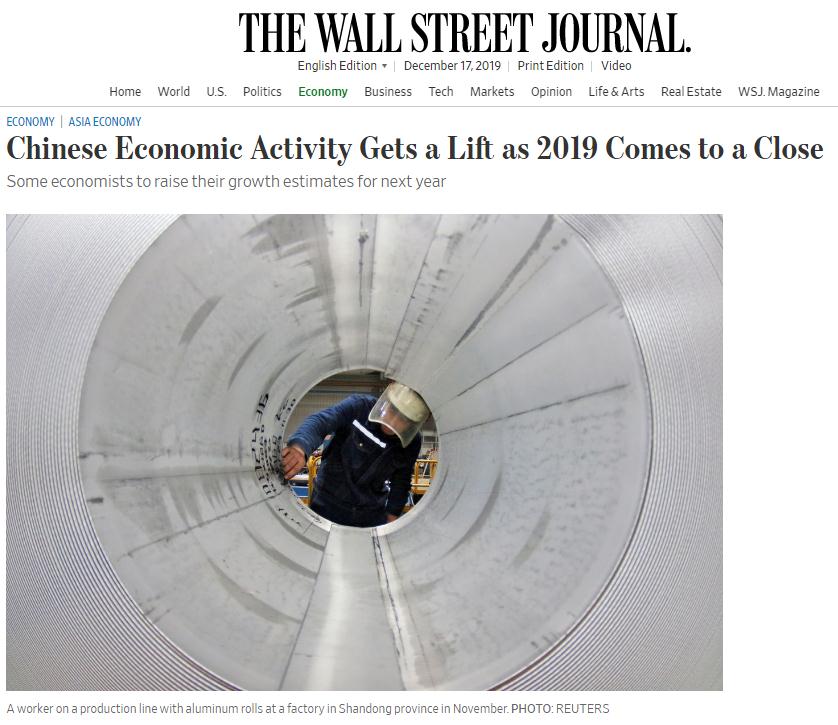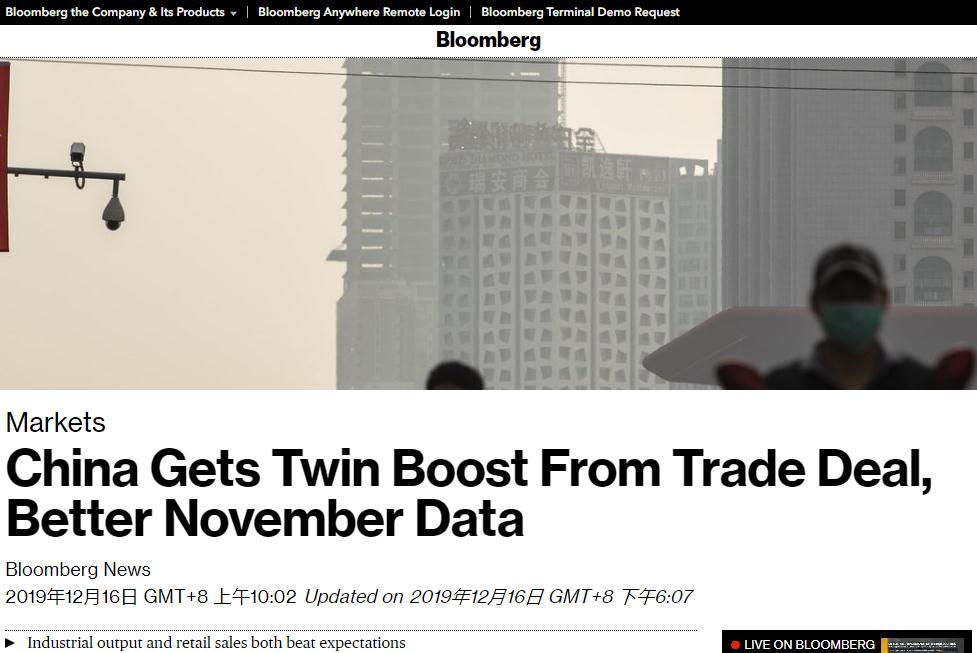China Daily Online, December 17th-At the end of the year, China’s economy once again handed over a beautiful "report card". According to data released by the National Bureau of Statistics on the 16th, China’s economic indicators such as industry and consumption rebounded sharply in November and were higher than expected. Foreign media believe that these data show that the signs of China’s economic stabilization are becoming more and more obvious.

Screenshot of Reuters website report
Reuters reported on the 16th that the National Bureau of Statistics of China announced on Monday that the added value of industrial enterprises above designated size actually increased by 6.2% year-on-year in November, much higher than the median forecast of Reuters analysts — — 5%; The total retail sales of social consumer goods increased by 8% year-on-year, which was also higher than the median forecast of 7.6% in Reuters. Both figures are the highest since June this year.
The report pointed out that these data showed that China’s economy showed signs of stabilization at the end of the year. In November, the growth rates of industry and consumption were better than expected, both hitting five-month highs, while investment remained stable.
In addition, China’s industrial added value data improved in November, echoing the improvement of factory activity and purchasing managers’ index released earlier, which shows that the measures taken by China government to support domestic demand have played a role in the context of export pressure. Komatsu Ltd, a Japanese construction machinery manufacturer, said that its equipment utilization time in China increased in November, the first time in eight months, in line with the rising purchasing managers’ index.
The report quoted analysts as saying that with the staged achievements in Sino-US trade negotiations and the continuous implementation of China’s domestic policy of steady growth, the positive trend of China’s economy will continue. Cassie Wang, a senior economist at ANZ, believes that China policymakers may rely on various tools to maintain economic growth next year, rather than relying on a single policy choice.

Screenshot of Wall Street Journal website report
The Wall Street Journal reported that in November, the added value of industrial enterprises above designated size in China increased by 6.2% year-on-year, which was not only higher than the 4.7% year-on-year growth in October, but also easily exceeded the estimated value given by 15 economists surveyed by The Wall Street Journal — — 5%。
According to the report, a series of supportive policies introduced by China government boosted domestic economic activities in November, and promoted industrial production and consumer spending.
Bloomberg reported that according to the data of the National Bureau of Statistics of China, the unemployment rate in China was 5.1% in November, which was the same as that in October. The level of new employment in China this year is expected to reach more than 13 million, far higher than the previous target of 11 million.

Screenshot of Bloomberg website report
The report also pointed out that the latest economic data prompted some economists to raise their expectations for China’s economic growth next year. After the data was released on 16th, economists from UBS Group AG and Oxford Economics raised their forecast of China’s economic growth rate to 6% in 2020 from the previous 5.7%.
Agence France-Presse said on the 16th that during the "double 11" shopping festival, e-commerce in China once again set an online sales record, which showed the strong consumption power of Chinese. The report quoted Fu Linghui, spokesman of the National Bureau of Statistics, as saying that in the face of rising domestic and international risk challenges, China’s economic operation showed positive changes in November, with major economic indicators better than expected, and it is expected that the expected growth target for the whole year will be successfully achieved.